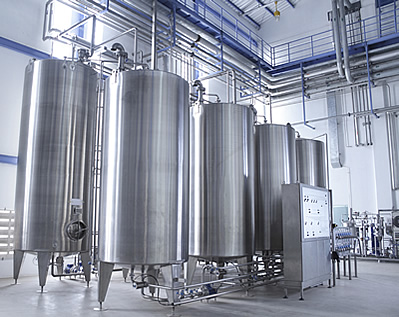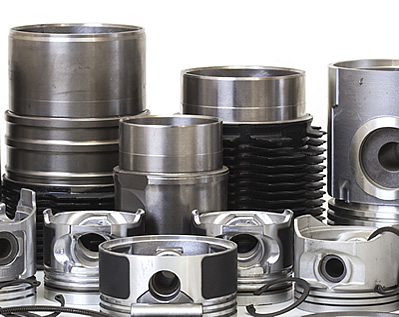Corrosion is a complex electrochemical process which can arise from a variety of sources. Galvanic corrosion and fretting can also cause component failure. Fluoropolymer coatings have been developed as highly effective solutions to problems caused by corrosion. Used as standalone systems or with additional sacrificial primers, we have a comprehensive range of coating systems on hand.
From a coating perspective, corrosion can be segregated into four categories, each requiring a slightly different approach.
This type of corrosion is particularly relevant to the Oil & Gas and Offshore industries. Salt water can have a catastrophic effect on fasteners, couplings and processing equipment that is used in environments where there is prolonged or constant exposure to such environments. As well as preventing component failure, the lubricating benefits gained from the PTFE content will substantially reduce preload torque with coated fasteners by reducing friction between the mating parts. This allows for a more controlled, consistent assembly and also reduces or eliminates the risk of fasteners becoming loose as a result of vibration.
The application of a corrosion resistant coating can reduce manufacturing costs substantially. Where corrosion is an issue, lower quality base materials can be used instead of very expensive, high grade stainless steels or alloys such as Inconel or Hastelloy which are also difficult to machine.

Coatings are available as single layer systems or primers can be applied to improve the overall performance of the coating. For increased levels of protection, multiple, thin layers of coating can be applied to ensure that any microscopic pinholes are covered, although care must be taken with fasteners or mating surfaces as dimensions may have to be altered to compensate for coating thicknesses.
There are numerous coating systems available, all manufactured using additives, resins and other pigments that lend themselves to particular applications depending on the type of environment and the nature of the parts. A wide range of colours is also available where colour coding or clear identification purposes are a requirement. These coatings are available in either solvent based or water based systems.
Despite the fact that protection against corrosion is the principle issue, there may be individual factors or a combination of other requirements from the coating systems such as:
As the choice of corrosion resistant coatings is so varied and the permutations of processes is almost infinite, we may need to ask you many questions to ensure that we provide the best solution. We want to get it right so please bear with us.
Where chemicals or harsh substances are involved, we tend to move away from the single layer systems toward multi-layer systems that have a higher fluoropolymer content. The rationale behind this is that single layer systems are a blend of resin, fluoropolymer and other additives. The resin gives strength, adhesion, abrasion resistance and some protection, the fluoropolymer provides a barrier and other properties and the additives provide additional benefits such as additional dry lubrication and bearing properties.
Single layer systems are extremely effective but where harsh substances are involved, the characteristics of pure fluoropolymers such as their inert nature and the melt flow properties of PFA and FEP are more appropriate.
Pure fluoropolymer systems need two or more layers of coating. If a pure fluoropolymer were applied to a substrate material, it would simply peel off – after all, non stick coatings are non stick on both sides!
Adhesion to the substrate is provided by a basecoat or primer. This has a resin content and also a fluoropolymer content. When the pure fluoropolymer topcoat is applied, the two layers chemically bond together during the curing process to create a finished film.

In extreme circumstances, coatings are available with fillers that either significantly retard or totally stop any permeation. These fillers can be added to the topcoat or are available in heavily filled mid coats with a platelet type of structure that forms a physical barrier against permeation.
We have a library of quantitative data of results of exposure testing for all fluoropolymers to almost every corrosive substance that exists. We use this data to carefully select the correct coating system for your particular application.
Where dissimilar metals are in contact, galvanic corrosion can be a major reason for component failure and seizure of mating parts. In such cases a thin layer of PTFE coating can provide a highly effective, long lasting barrier against this type of corrosion. Reduced make up torque and dry lubrication are particular benefits when applied to fasteners. Even in circumstances where some corrosion is evident, underburrowing of the coating is negligible due to the highly adhesive properties of the resin system, so disassembly can be easily carried out for refurbishment or replacement.
Many substances are not generally considered to be corrosive but can have very damaging effects on a vast range of materials. Some of these substances are:

These substances and many more could be considered as relatively benign but can have significant corrosive and destructive effects. Where temperature and pressure are a factor, a multi layer system with a high fluoropolymer content could be the most appropriate solution. In ambient conditions, a single layer system may be more than adequate.
Fluoropolymers such as PTFE, FEP and PFA can be blended with PAI (polyamide imide), PPS (polyphenylene sulphide), epoxy, phenolic or polyurethane resin systems that support their physical properties, giving an effective and durable barrier against chemical attack.
Almost all metals, plastics, rubber, elastomers, composite materials such as carbon fibre and fibre glass, epoxy resins, ceramics, glass and many other materials can be protected by a wide range of systems according to the specific application.
